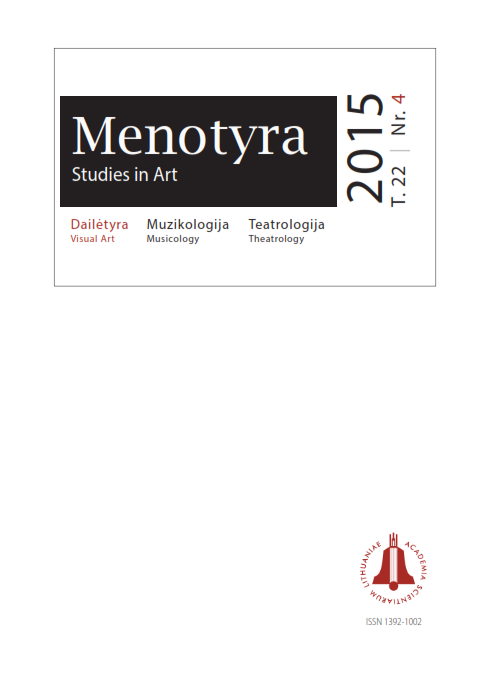Dailininkų mobilumas XVIII a. Lietuvos Didžiojoje Kunigaikštystėje: Jeronimo Florijono Radvilos dvaro pavyzdys
Mobility of artists in the 18th century in the Grand Duchy of Lithuania: a case study of Jeronimas Florijonas Radvila manor
Author(s): Aistė PaliušytėSubject(s): Fine Arts / Performing Arts, Visual Arts, Sociology of Art
Published by: Lietuvos mokslų akademijos leidykla
Keywords: migration; artist; art commission; manor; Jeronimas Florijonas Radvila; Grand Duchy of Lithuania
Summary/Abstract: The article deals with the mobility of artists who worked in Jeronimas Florijonas Radvila (Hieronim Florian Radziwiłł, 1715–1760) manor. The article refers mainly to the correspondence between manor officials and Radvila. The phenomena under research are evaluated in the context of labour relations between noblemen and artists of the Grand Duchy of Lithuania (hereinafter, the “GDL”) during the Saxon period. Local moving was the most frequent form of mobility of artists in the manor of Radvila and the entire GDL. This kind of mobility was mostly encouraged by work orders in nobility estates, also by training of dependents in the workshops of local artists. The artists who worked for Radvila fulfilled orders in his residence in Biala Podlaska (Biała Podlaska, Poland now), Slutsk (Słuck, Belarus now) and other estates owned by Radvila. Yet Radvila was the one who initiated interregional migration of artists. He looked for artists in the biggest cities (Warsaw, Krakow) of the Polish-Lithuanian Commonwealth and beyond, e. g. in Berlin, Dresden, Königsberg (Kaliningrad now) and Vienna. Employment of foreigners in their homelands was a feature of Radvila that distinguished him from the majority of noblemen of the GDL. Most foreign artists employed by the duke were from the German areas. These movement directions of the artists coincided with migration directions which prevailed in the early 18th century in the entire GDL. The duke aimed to employ artists of high proficiency, generally famous artists. He spent a considerable amount of money and made huge efforts in that. He employed and gave work to foreigners of various origins from some to several years in his manor. These artists, who had a higher status if compared with that of local artists, educated inhabitants of Radvila estates and extended their professional influence.
Journal: Menotyra
- Issue Year: 22/2015
- Issue No: 4
- Page Range: 273-289
- Page Count: 17
- Language: Lithuanian

